
JUNE 24, 2021
Growing up, I hadn’t heard of the term nonbinary, and I didn’t know what gender dysphoria was. Watching nonbinary folks come out on YouTube and following their blogs on Tumblr helped me figure out my own identity.
It’s important for people to see themselves reflected in art and media. So I created “Documenting Dysphoria,” a series of illustrative portraits that explore what gender dysphoria feels like. The project is inspired by my own journey as a nonbinary person.
Gender dysphoria is a term for the distress a person experiences as a result of the disconnect between their internal gender identity and the gender they were assigned at birth by a doctor. This experience often allows many, though not all, trans people to come to understand their own identity.
However, gender dysphoria is sorely misunderstood by society. The fact that in 2021, state legislatures across the U.S. continue to advance bills that target transgender people shows that our society still has a long way to go to fully understand and accept the trans community and all gender identities.
“Documenting Dysphoria” seeks to show the diversity of experiences around gender dysphoria and across the gender spectrum. In this series, each photograph represents that individual’s feelings of gender dysphoria. Everyone experiences gender dysphoria differently and to different degrees. Some people may experience more body dysphoria, and others, more social dysphoria. Some trans individuals may not even experience any dysphoria at all.
These images are intended to affirm and offer visibility to the trans and nonbinary experience from a queer lens. This project is for other trans and nonbinary people — for us to hear and see fellow trans and nonbinary stories, for us to recognize parts of ourselves in the experiences of others. Ultimately, it is to empower us to embrace our own skin.
For everyone who is trans, nonbinary, gender-nonconforming, or questioning their gender identity, this project is for you.
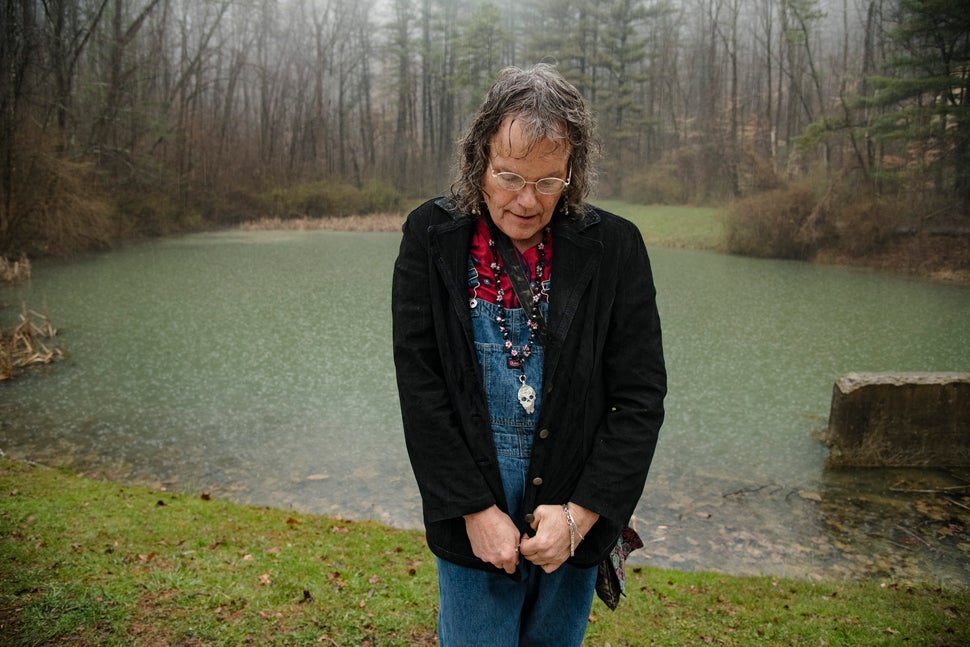
I have this memory. I was about 5, and I just moved to this new town. There were a bunch of kids who I got to know and I played with a little bit. There were girls and boys. Part of the play place was a lake. I didn’t want to do what it looked like the guys wanted to do. The girls didn’t quite accept me. Neither one was fitting for me at that time. I remember going over to the other side of the street, sitting on the bridge overlooking the brook that fed the lake, and just wondering what I am. Am I an alien?
What did that feel like?
Scary. Also, how alone I was in my non-understanding of what was going on. I didn’t want to tell anyone. Somehow I was very embarrassed to show any signs of female characteristics, or to like girl things publicly. I remember having to live a dual life.
What advice do you have for others who transition later in life?
Talk to as many people who have done it as possible. Get the real story. When you hear enough stories, you can probably place yourself some place in the spectrum that you feel most comfortable with.
What do you hope people who see this project understand?
They are real people, just like everybody else. There’s good ones. There’s bad ones. There’s smart ones. There’s dumb ones. Everything you can imagine — war heroes, football players, models, every walk of life ... they are there.
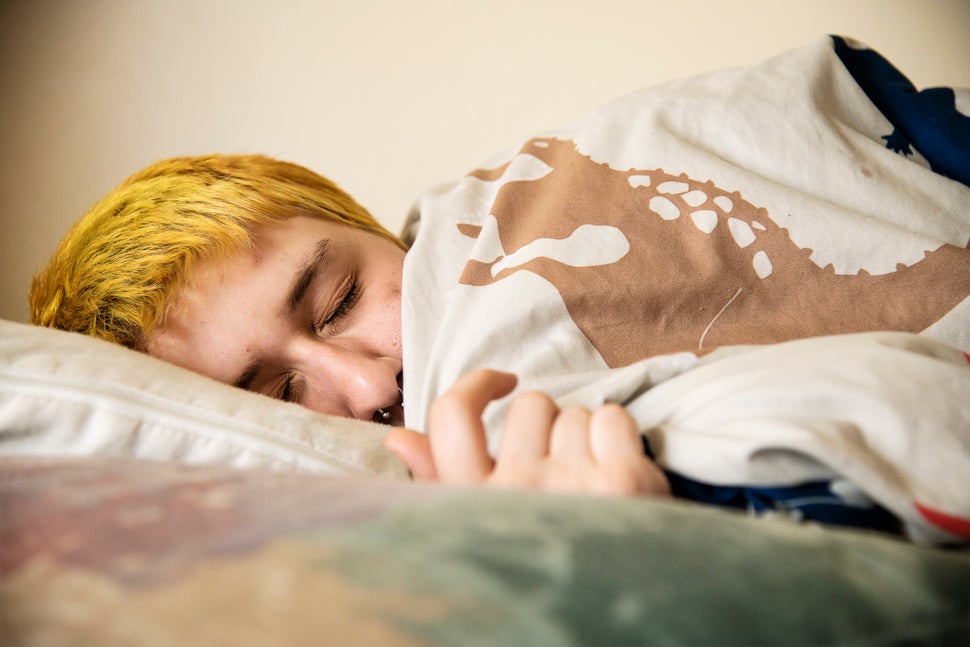
I identify as a demiboy or trans boy. It basically means that I’m mostly masculine, but there is still a lot of fluidity in the way that I experience masculinity and my gender.
I put a lot of thought and creativity in the way that I dress. A lot of times I dress really feminine. It kind of derails people from how I actually look, and my identity. It’s really shitty because they devalue the way I identify just because I’m wearing a skirt. If a cisgender gay man was wearing a skirt, he would still be a cis gay man. But since I’m trans, I experience this invalidation of my identity just because I’m aligning myself with my sex given at birth.
What words would you use to describe the feeling of gender dysphoria?
Awkwardness. I would say itchy. My skin doesn’t feel right on me. Parts of my body don’t feel right. Sometimes gender dysphoria can cause panic attacks. When I have a panic attack, I’ll just feel really physically drained and nauseous.
I also have dysmorphia, which is a psychological disorder in which you are intensely uncomfortable with the way that you look, which is also a part of my dysphoria. I’ll be looking in the mirror and just feel really, really uncomfortable with the way my face is shaped, and how feminine I look. I’ll feel really uncomfortable with my body, because of my dysphoria, and then I’ll actively hate my body, because of my dysmorphia. They go hand and hand with each other.
What do you hope people come to understand through these images?
The idea that trans doesn’t look a certain way, and that it’s expressed in so many different ways.
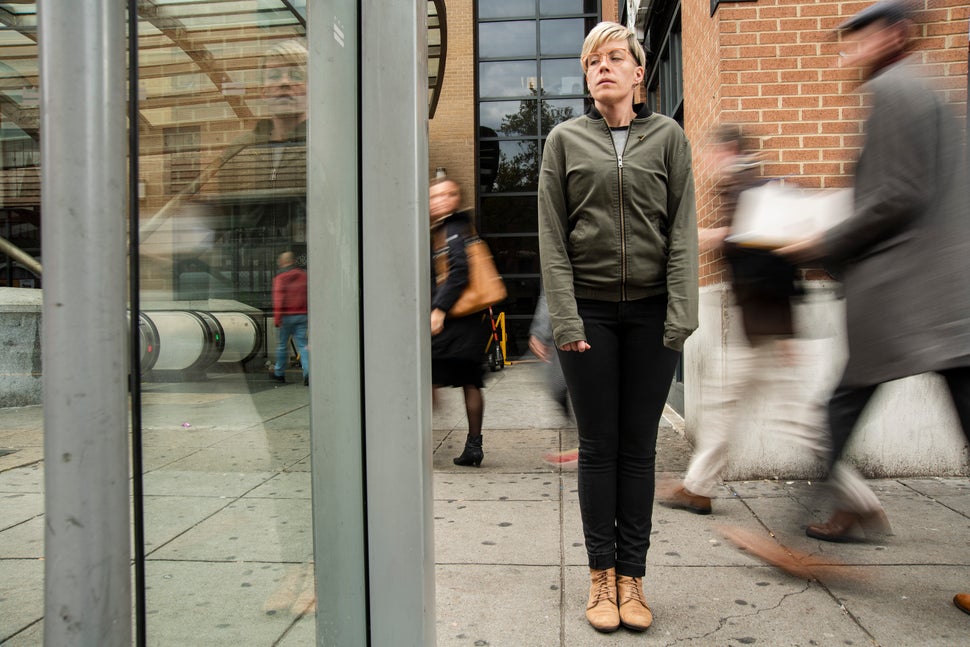
I am a genderqueer, nonbinary, trans person assigned female at birth. I claim trans because I’m not cis. I am nonbinary in that I don’t identify with a gender on either end of the spectrum of gender and actually don’t even believe in gender as a binary spectrum, but more of a constellation.
What are some different situations where you have felt gender dysphoria?
I find myself tensing up when I’m in crowds where I know, or anticipate, I will either be misgendered, or people from my past will use my birth name, and that there will be an environment where I am referred to as “the daughter,” or complimented on things that I perceive in feminine ways.
I think some of that is just existing in space with people who don’t see me as who I am. Everyone at my job knows my identities. I’ve shared it with my family. My friends know. And still it happens: People don’t see you. And that tension just heightens. I think no matter what I do, people don’t see me as trans, or they don’t see me as genderqueer, and that just heightens however I feel my body in that moment. But nothing feels good.
What words or feelings would you use to describe gender dysphoria?
It’s like a slow drill or like a dull vibration that’s always there. It’s that ever-present, kind of dull refrigerator hum that I never bothered to investigate and was just told, “Well yeah, the refrigerator hum. That’s just a sound you’re used to.” I absolutely have moments of gender euphoria where I don’t hear the hum.
What do you hope people who view this project might learn from it?
I hope that someone is curious, in a non-exploitative way, and that their wheels keep moving around this idea that gender is a fucking construct. I would even imagine, on some level, someone else feels seen or heard or affirmed.
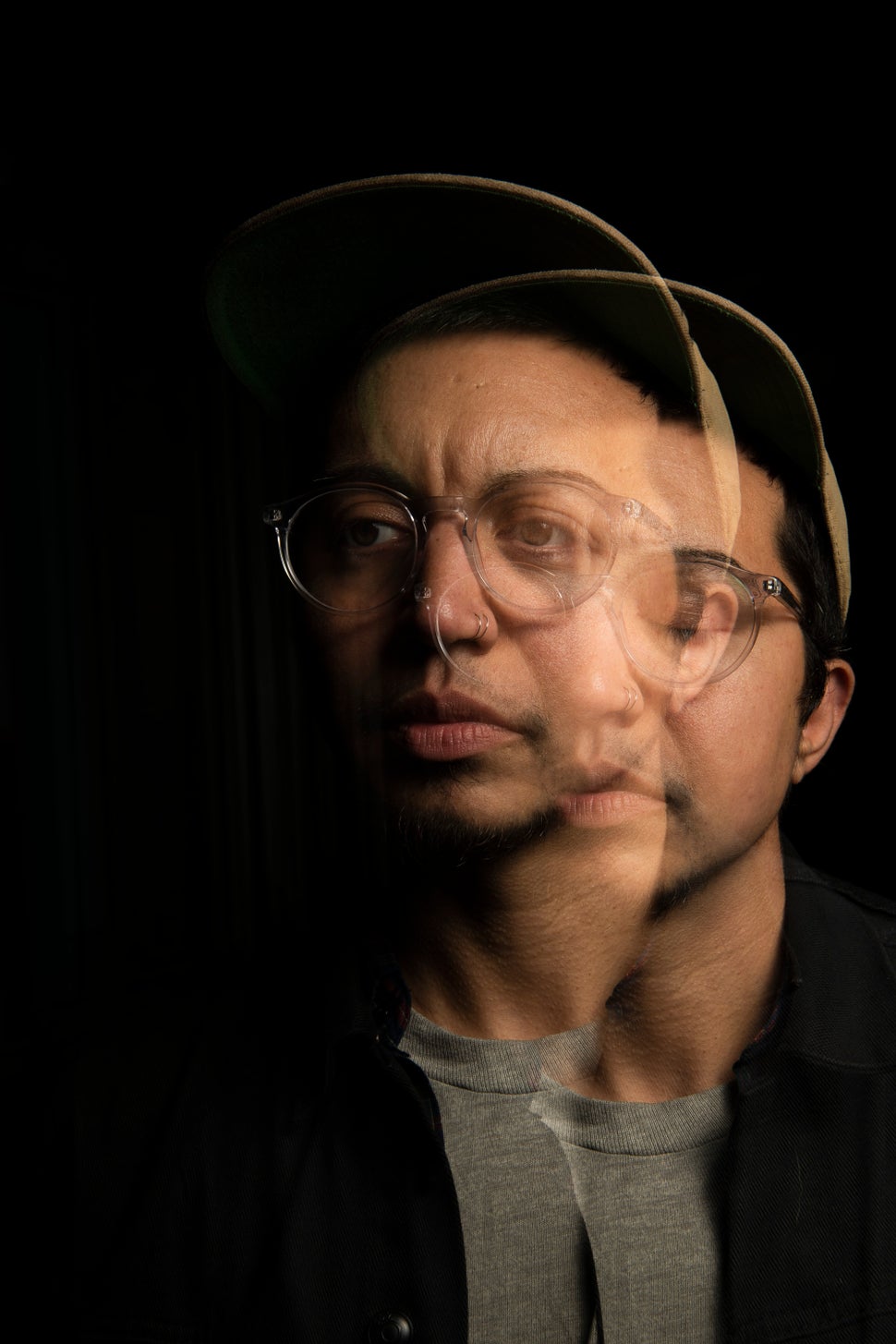
I identify politically and internally as nonbinary and externally practice as masculine, so trans-masculine. Nonbinary to me is being off of the structure that was put into place to categorize/control people. To me, that’s the political part of the identification.
What does gender dysphoria mean for you?
What comes to mind is a strong feeling of disorientation, seeing an offset image or looking in parts of a fragmented mirror and seeing someone else’s body reflected.
My brain goes to experiencing dysphoria when being misgendered. Just hearing a pronoun — it can feel completely out of left field. I think when I said the word disoriented earlier, that is something that I tie to that of just being, “Wow, who the fuck are we talking about?” And then the embarrassment and the realization that, “Oh, this person was actually referring to me.” But it’s like a shadow person.
What do you hope people can understand from seeing this project?
I would hope that other trans folks would see that they are not the only one in certain struggles. I think the secondary part of that is someone realizing that someone’s experiences are similar or the same — that also creates a feeling of connectivity.
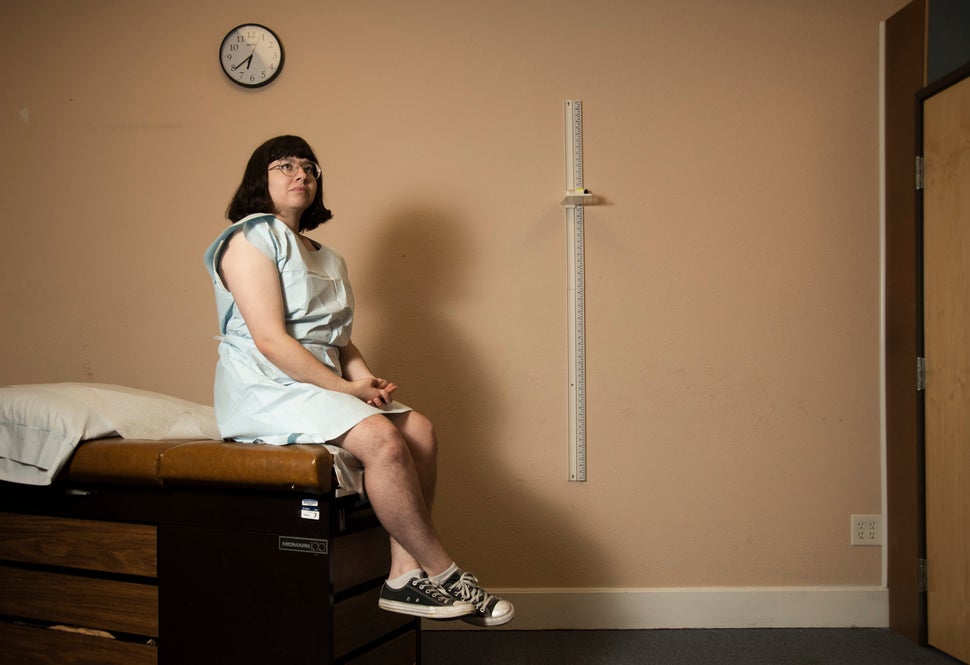
I identify as trans, and under the trans umbrella, I identify as nonbinary. A lot of times people will explain nonbinary as both a man and a woman, neither, or somewhere in between. For myself, I like to even exist or define myself outside of those short definitions. In addition to being nonbinary, I identify as femme, as somebody who presents in a way that’s on the more feminine side. Then, because it’s central to my experience of dysphoria, I would also throw intersex in there as well.
What are some times you’ve experienced dysphoria?
Going to doctors and getting really any kind of physical or body exam is definitely a time when I’ve experienced a lot of dysphoria. In my case, for some reason, I can never go to those appointments without crying somehow. That’s because I know I’m nonbinary, but when I tell my doctors that, “I’m nonbinary, so please don’t do this thing, please don’t call me this thing, please don’t prioritize this, this and this,” they just always ignore that anyway.
One thing I don’t identify with for myself and one that I like to dispel a lot is the whole trapped-in-your-body feeling. For me, that’s never really been my experience with dysphoria because I don’t feel I’m trapped in anything.
What do you hope people might understand from this project?
That dysphoria looks different for everyone. I think that, in the media, dysphoria is presented really one or two ways; it’s very watered down. I don’t think people realize that it is very personal, that it is not the same for every person, even if they share the same identity. That for some people, its mostly social dysphoria. For some people, it’s mostly physical dysphoria. And that it’s not clear-cut.
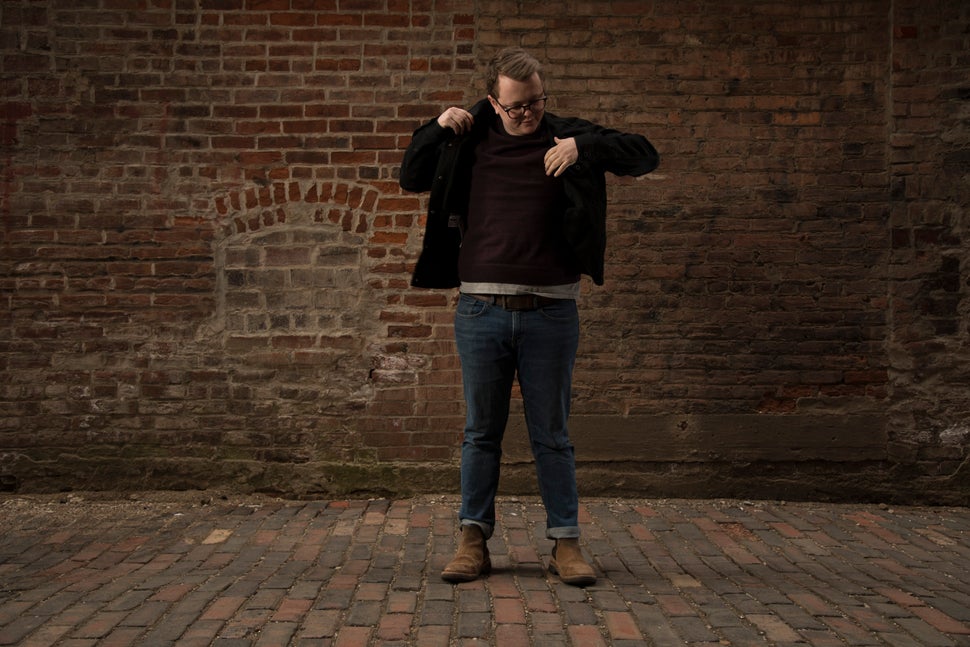
I use they/them in my personal life. I use he/him in my work life. I identify as transmasculine genderqueer.
What does that term mean for you?
I’m definitely someone who loves the term queer. I think that it is not only a kind of umbrella term that doesn’t have the rigid binary terms we have for a lot of sexuality and gender, I also think of it as political. My identity is not something that is only part who I am. It’s something that I fight for. It’s something that I believe in. It’s something that’s completely changed my world view. And transmasculine because I think that’s easier for people to understand. Being obviously traditionally masculine-presenting, the genderqueer part is harder for people to grasp. So having the identifier transmasculine is helpful to make it a little easier to digest.
How would you describe what gender dysphoria is?
Feeling like all of the pieces of a puzzle are just a little bit off, that nothing quite fits or feels right, but I can still envision the whole picture. And that’s the frustrating part — that I just can’t get it to connect.
When do you experience gender dysphoria?
Probably most mornings. Getting ready for work and things. Trying to find clothes that fit right. Before I had top surgery, it was every morning, having to put a binder on. Now it’s more finding clothes that fit the style that I like while also being able to fit my waist.
What do you hope people come to understand through these images?
Just to be gentler with people. There are some times that I might go days internally screaming. That has a domino effect on so many other aspects of life. It can affect how I sleep, how I care for myself, my productivity at work. Sometimes people just need more care. Maybe take pause and know that someone might need a more empathetic response than they might on another day.
